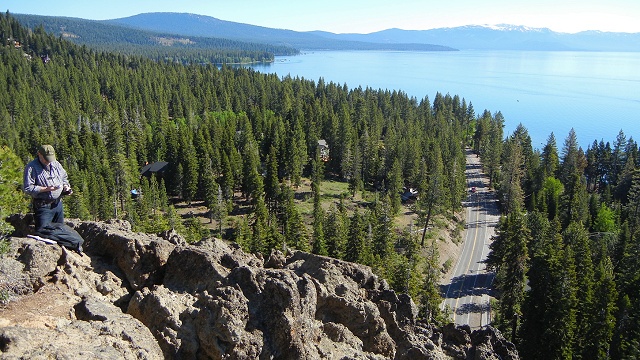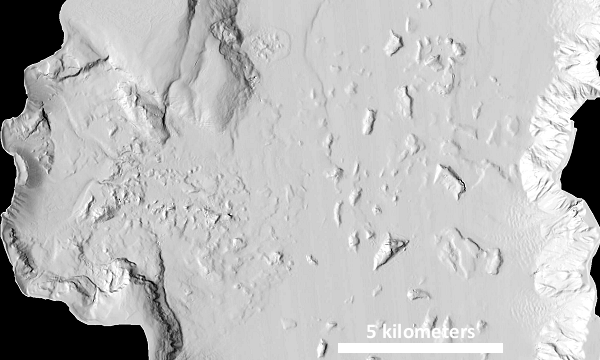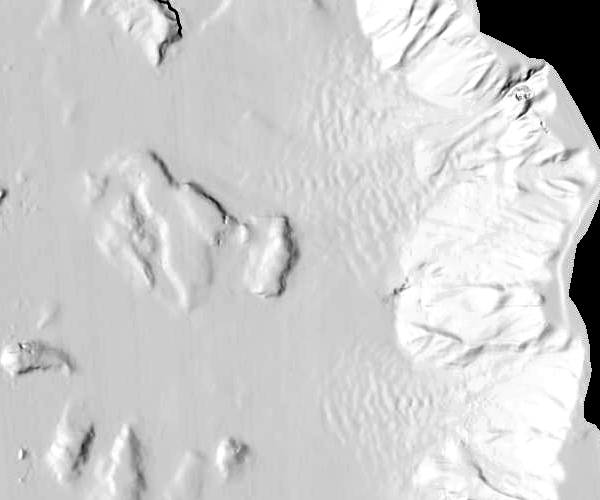
Once upon a time, geologists tell us, a massive chunk of Lake Tahoe’s western shore collapsed into the water in a tremendous landslide. The water responded by sloshing high onto the surrounding shores in a series of landslide tsunamis. A major new study in the journal Geosphere adds much new detail to that story, tracing massive features around and beneath the lake. And it places the date of the fearsome event near the time that humans first visited it.
Lake Tahoe is a peaceful mountain resort area today, but its geologic past has been long and violent. Its very presence is due to tectonic stretching of the Earth’s crust across Nevada, which has opened large basins from California’s Sierra Nevada crest all the way to Salt Lake City, Utah. The Tahoe basin has been there for roughly 3 million years, during which time it’s seen outbreaks of volcanism and countless major earthquakes.
Forty years ago the first sonar survey of Lake Tahoe showed evidence that bite-shaped McKinney Bay, in the middle of the lake’s western shore, is a scar left by a very large landslide and that huge pieces of that slide, as much as a kilometer long, are strewn across the lake bottom. Another sonar survey in 1998 revealed the slide in startling detail, as seen below.

Since that time, as funding permits, geologists have sent submarine-mounted cameras into the lake and taken core samples of its sediment. They’ve also tramped the shores and mountainsides, mapping the signs the catastrophe left there.
The new paper in the August issue of the journal Geosphere, by veteran researchers James G. Moore, Richard Schweikert and Christopher Kitts, assembles the evidence old and new into a scenario of that convulsive day. Much of their paper represents significant progress on the Tahoe tsunami problem.
